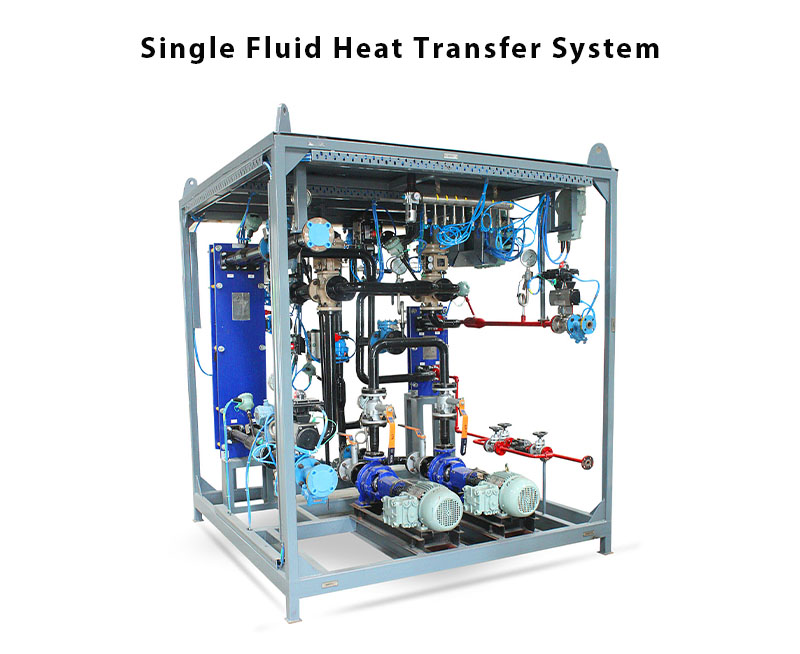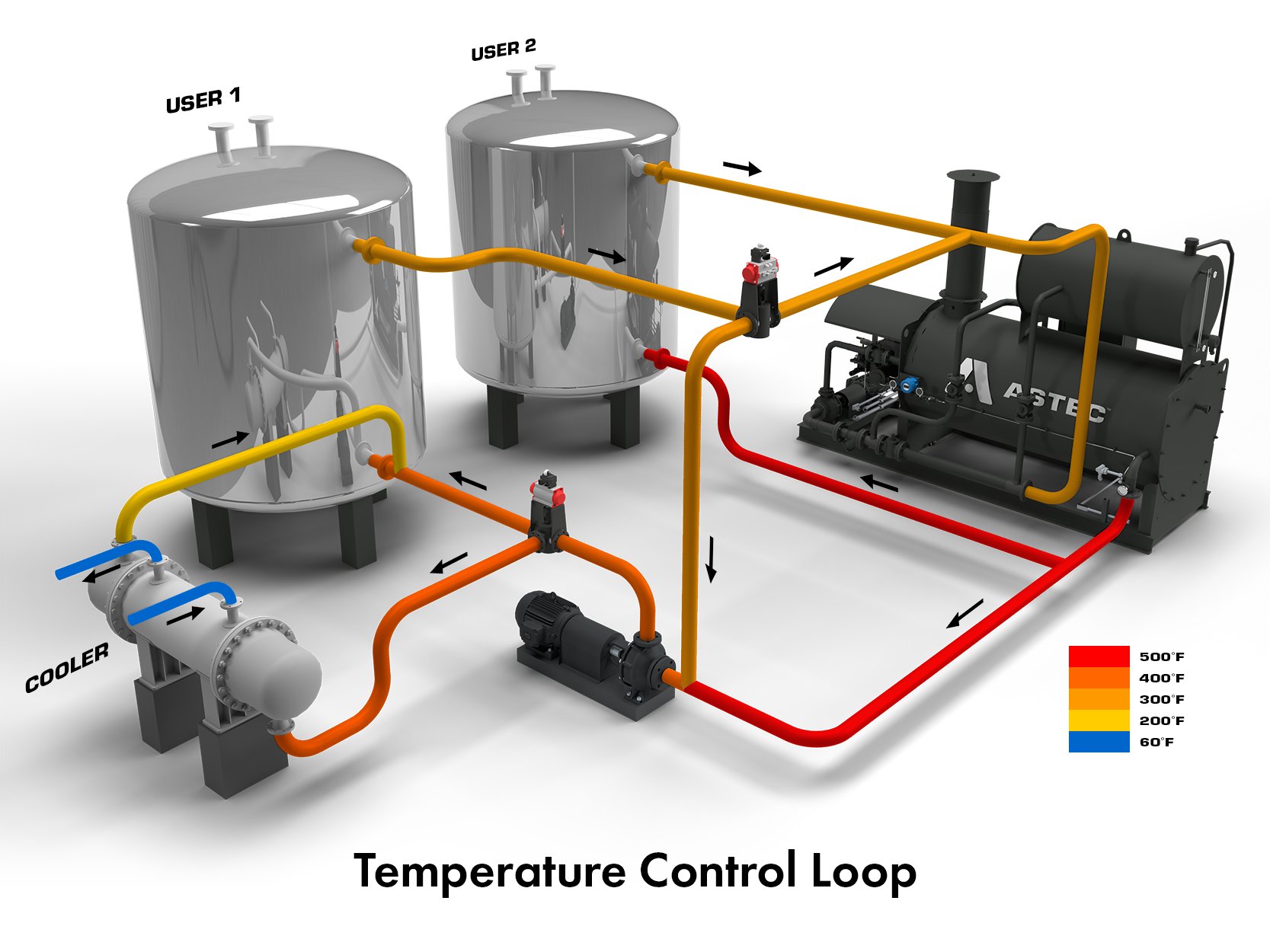The Function of Heat Transfer Equipments in Sustainable Energy Solutions for the Future
Heat transfer systems are important in the quest for lasting energy services. They maximize thermal power management, boosting the performance of eco-friendly innovations. By employing devices like radiation, transmission, and convection, these systems reduce energy losses. Their function in solar thermal and geothermal applications is particularly substantial. As advancements arise, the potential for more innovations raises crucial concerns about future energy strategies. What growths will shape the landscape of lasting energy?
Recognizing Heat Transfer Solutions

The Relevance of Thermal Energy Monitoring
Reliable thermal energy management is vital for taking full advantage of energy performance and minimizing waste in different systems. By controling temperature level and enhancing Heat transfer processes, companies can substantially decrease energy usage and operational expenses. Efficient monitoring entails the implementation of innovative modern technologies and methods that monitor and regulate thermal problems within systems, guaranteeing that energy resources are used efficiently. Additionally, correct thermal energy management adds to decreasing greenhouse gas discharges, straightening with worldwide sustainability objectives. It also enhances system integrity and performance, bring about boosted item quality and longer equipment life expectancy. Inevitably, focusing on thermal energy management is an important step towards developing a lot more lasting power services and fostering a responsible approach to energy intake in industrial and domestic contexts.
Applications of Heat Transfer in Renewable Energy
While various renewable resource resources guarantee sustainability, the efficient application of Heat transfer plays a vital function in their efficiency. In wind energy systems, Heat transfer is used for generator part air conditioning, boosting efficiency and durability. Geothermal energy depends on effective Heat exchange in between the planet's subsurface and the liquid distributing in the system, making best use of energy removal. Biomass power processes also gain from Heat transfer, as it aids in converting natural materials right into usable gas through pyrolysis and gasification. In addition, in hydropower, preserving perfect temperatures in reservoirs can enhance power result. Each of these applications shows the important significance of Heat transfer systems in enhancing renewable power modern technologies, ultimately adding to a more lasting power future.
Enhancing Solar Thermal Power Performance
As solar thermal power systems proceed to advance, enhancing their effectiveness has come to be necessary for optimizing power outcome. Advancements in Heat transfer modern technologies, such as improved thermal storage materials and innovative Heat exchangers, play a considerable function in improving efficiency. By using advanced materials that have remarkable thermal conductivity, systems can record and transfer Heat better. In addition, integrating monitoring systems that adhere to the sunlight's path assurances that enthusiasts receive ideal solar exposure throughout the day. Using nanotechnology in solar absorbers can additionally raise power absorption rates. Including automatic control systems assists control temperatures and take care of power distribution efficiently, leading to reduced losses and boosted total system effectiveness. These improvements lead the way for more sustainable solar thermal energy options in the future.
Geothermal Heating: A Lasting Remedy
Geothermal heating presents a viable option for lasting power, providing considerable environmental advantages via minimized greenhouse gas emissions. Its efficiency and cost-effectiveness make it an attractive choice to traditional furnace. Challenges related to execution needs to be addressed to maximize its prospective effect.
Environmental Advantages of Geothermal
Although typical home heating approaches add substantially to greenhouse gas exhausts, geothermal heating presents an engaging alternative that lessens ecological impact. By using the Earth's interior Heat, geothermal systems use a renewable power source, substantially lowering dependence on fossil gas. This method generates marginal carbon discharges, making it a cleaner alternative for commercial and domestic home heating. In addition, geothermal systems advertise power performance, as they require much less energy contrasted to traditional heating unit. DVS Heat Transfer Systems. The use of geothermal energy additionally helps look here in minimizing air contamination, enhancing local air high quality and public health. As a lasting option, geothermal home heating sustains climate modification mitigation initiatives, placing itself as an essential part in the shift towards a greener future
Effectiveness and Cost-Effectiveness
Exactly how does geothermal home heating determine up in regards to efficiency and cost-effectiveness compared to traditional heater? Geothermal heating demonstrates exceptional effectiveness, typically attaining a coefficient of efficiency (POLICE OFFICER) of 3 to 5, meaning it creates three to five systems of Heat for every device of electricity taken in. This efficiency converts into reduced operating expense, especially in regions with stable geothermal sources. First setup expenses can be greater than conventional systems; nevertheless, lasting financial savings on power bills and minimized maintenance expenditures can offset these upfront investments. In addition, several federal governments incentivize geothermal systems through rebates and tax credit histories, boosting their cost-effectiveness. Overall, geothermal heating arises as a sustainable and financially practical alternative to even more conventional home heating options.
Implementation Obstacles and Solutions
Numerous obstacles can hinder the extensive application of geothermal furnace, regardless of their clear advantages as a sustainable energy service. High initial installment costs commonly prevent capitalists and home owners, making funding a significant obstacle. Furthermore, the geographical limitations of appropriate geothermal sites limit ease of access in specific regions. Regional laws and allowing processes can likewise complicate job development, resulting in delays. Public awareness and understanding of geothermal systems remain low, impeding acceptance. To deal with these obstacles, targeted education and learning campaigns can improve public understanding, while government rewards can ease monetary concerns. Working together with local authorities to enhance laws may help with smoother job authorizations, inevitably promoting the adoption of geothermal home heating as a feasible, lasting energy alternative.
Developments in Heat Transfer Technologies
Innovations in Heat transfer innovations play a crucial role in boosting energy effectiveness and sustainability. Advanced Heat exchangers and phase modification materials go to the leading edge published here of these growths, providing substantial enhancements in thermal administration. These modern technologies not just enhance power use however likewise contribute to reducing environmental influence in numerous applications.
Advanced Heat Exchangers
Advanced Heat exchangers play an essential function in improving energy efficiency across different applications in sustainable energy services. These devices promote the transfer of Heat in between two or even more liquids, noticeably minimizing power usage in processes such as commercial heating, cooling, and power generation. Advancements in products and design, such as making use of nanofluids and portable arrangements, have actually caused enhanced thermal performance and decreased size needs. In addition, improvements in electronic monitoring and control systems permit for enhanced procedure, additional enhancing efficiency. By decreasing waste Heat and taking full advantage of energy healing, advanced Heat exchangers contribute to lower carbon footprints and support the shift toward eco pleasant modern technologies. Their proceeded growth is vital for attaining global energy sustainability goals.
Phase Change Materials
The combination of stage change products (PCMs) into Heat transfer innovations stands for a significant innovation in power administration and efficiency. PCMs soak up and launch thermal power during their phase adjustments, making it possible for effective temperature guideline in building products and power systems. By storing excess Heat throughout top periods and releasing it when need boosts, PCMs add to load moving and power preservation - DVS Heat Transfer Systems. This capability boosts the efficiency of renewable resource systems, specifically in solar thermal applications. In addition, PCMs can enhance the thermal convenience of indoor atmospheres, minimizing dependence on traditional home heating and cooling down methods. As advancements in PCM solutions continue to arise, their role in sustainable energy services is positioned to expand, supplying encouraging avenues for future study and application

Future Prospects for Heat Transfer in Sustainable Energy
As the demand for sustainable energy options remains to climb, the role of Heat transfer systems is becoming increasingly essential fit future innovations. Technologies in layouts and materials are anticipated to enhance effectiveness in Heat transfer, lowering power losses in different applications. The integration of innovative thermal storage space systems, such as stage modification materials and thermochemical storage space, will certainly enable much better administration of energy resources. Research right into nanofluids and biomimetic Heat exchangers may further optimize thermal performance. The fostering of smart technologies will certainly enable for real-time tracking and flexible control of Heat transfer processes. These advancements are positioned to greatly contribute to the general performance and sustainability of energy systems, paving the way for a much more energy-efficient future.
Regularly Asked Questions
Exactly How Can Individuals Execute Heat Transfer Solution in your home?

Individuals can carry out Heat transfer systems at home by setting up energy-efficient devices, using radiant heat, and maximizing insulation. These steps enhance power performance, lower expenses, and promote sustainable practices in domestic atmospheres.

What Are the Expenses Connected With Setting Up Heat Transfer Systems?
The prices related to installing Heat transfer systems vary commonly, usually encompassing tools, installation labor, and maintenance. Factors such as system type, home dimension, and local laws significantly affect the overall expenditure involved.
Are There Federal Government Rewards for Heat Transfer System Installations?
Government rewards for Heat transfer system installments differ by region and can consist of tax rebates, grants, and credits. These economic advantages aim to motivate fostering, eventually advertising power efficiency and reducing ecological influence within areas.
How Do Heat Transfer Systems Impact Energy Bills?
Heat transfer systems notably affect power expenses by maximizing energy performance. By boosting the transfer of Heat, these systems minimize energy usage, resulting in lower energy prices and producing a much more lasting strategy to energy administration.
What Maintenance Is Required for Heat Transfer Solutions?
Maintenance for Heat transfer systems includes routine assessments, cleansing read this of elements, examining liquid degrees, ensuring proper insulation, and replacing used parts. These jobs aid keep efficiency, stop failures, and lengthen the system's functional life-span.
These systems help with the motion of thermal energy from one tool to one more, making it possible for the transfer of Heat for air conditioning, power, or heating generation objectives. Geothermal power relies on efficient Heat exchange in between the earth's subsurface and the liquid circulating in the system, making best use of power removal. Additionally, geothermal systems promote energy performance, as they call for less power contrasted to traditional home heating systems. Advanced Heat exchangers play a crucial role in improving power effectiveness across various applications in lasting energy options. Heat transfer systems significantly influence energy expenses by enhancing energy performance.